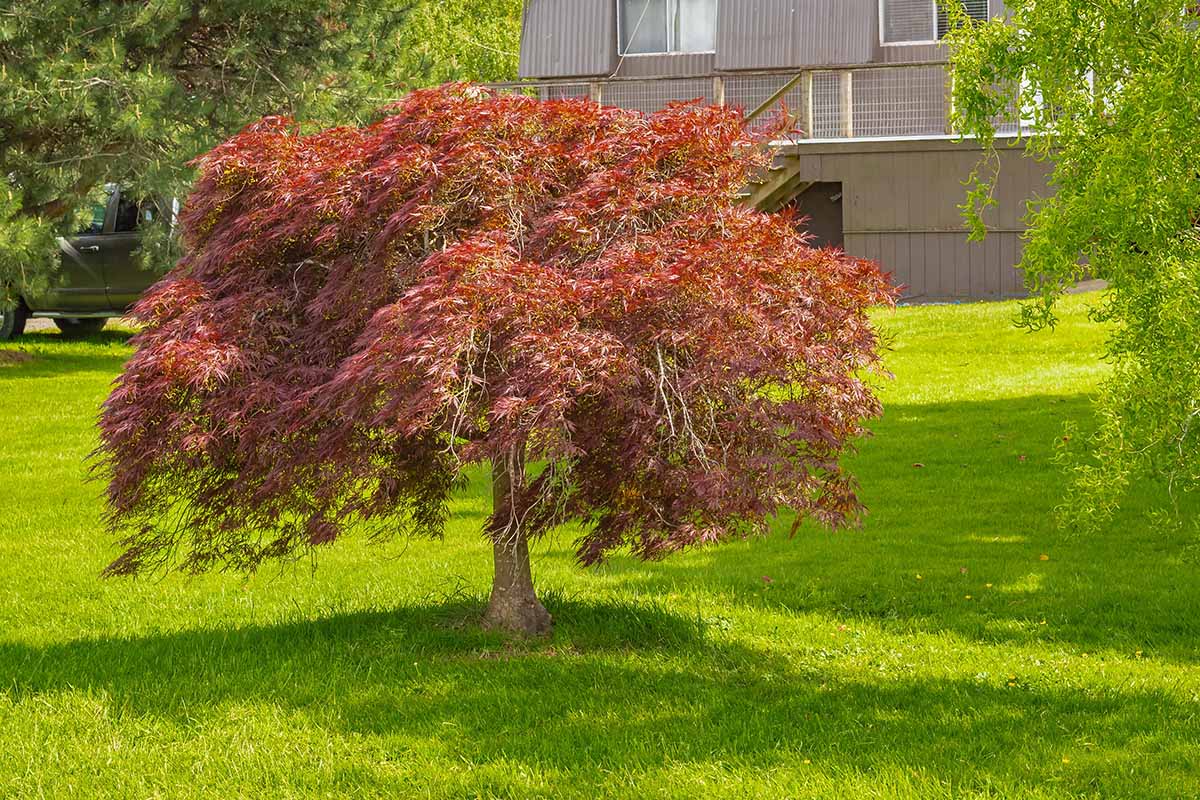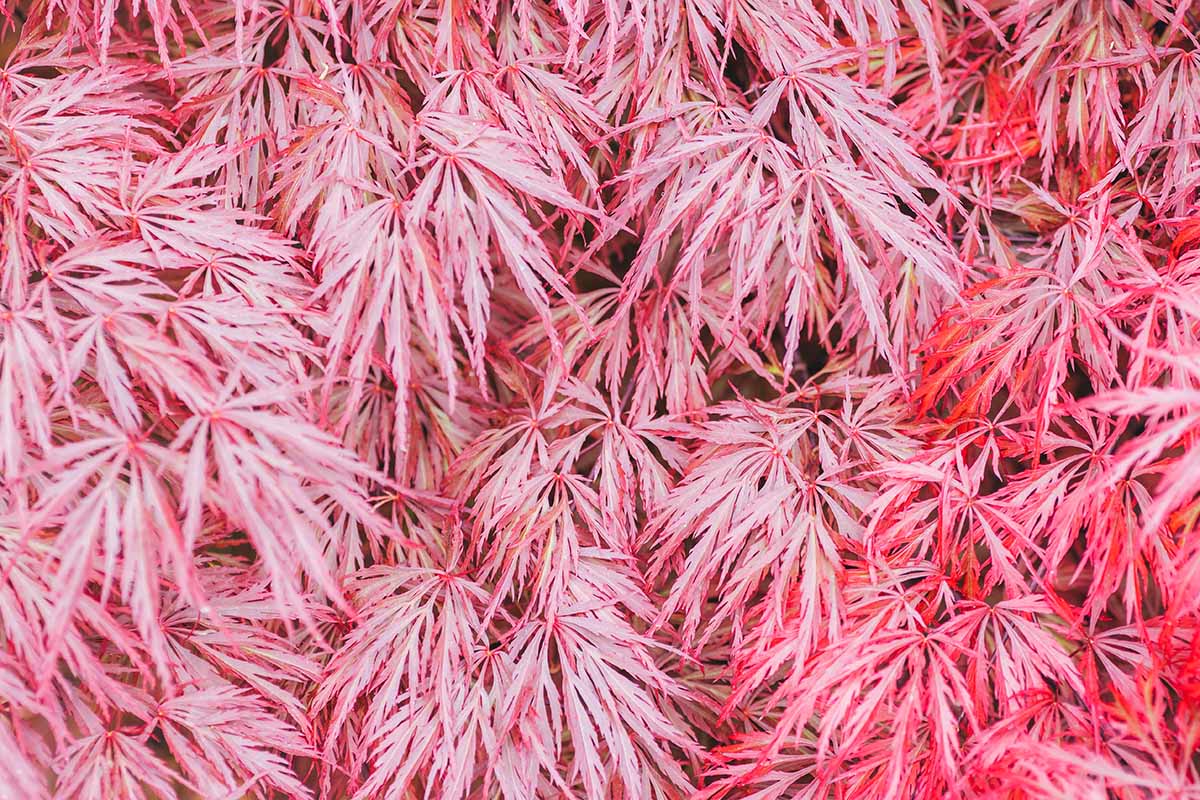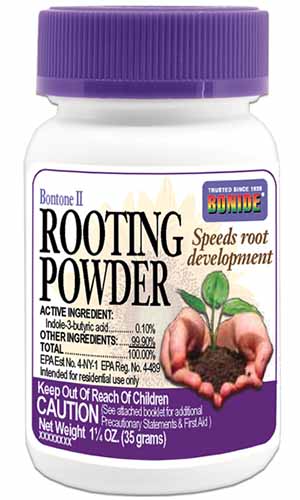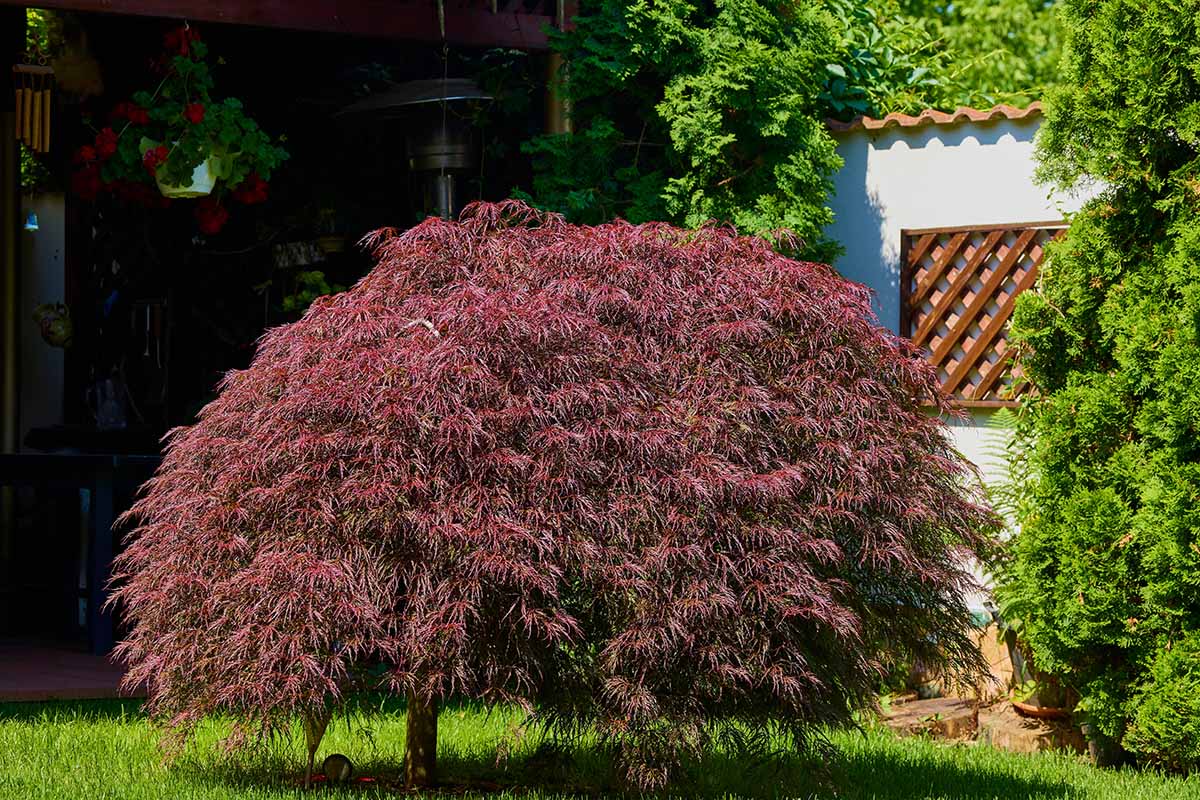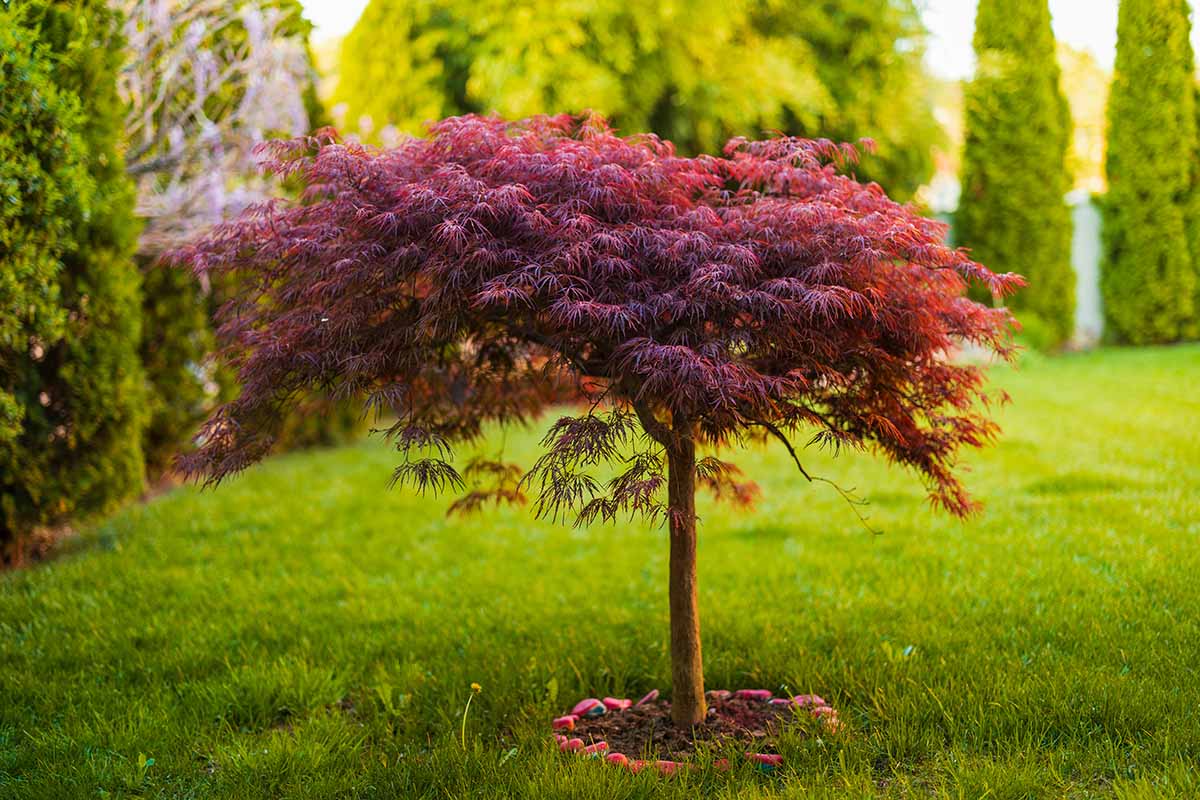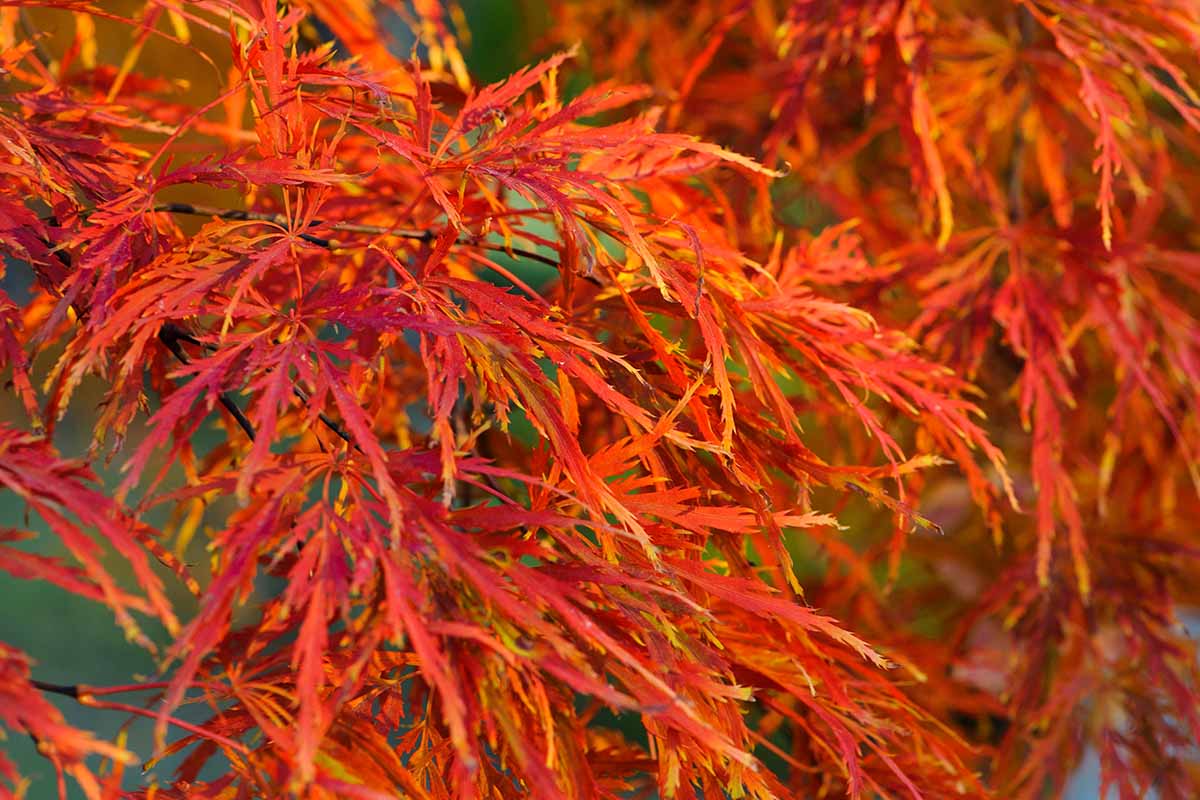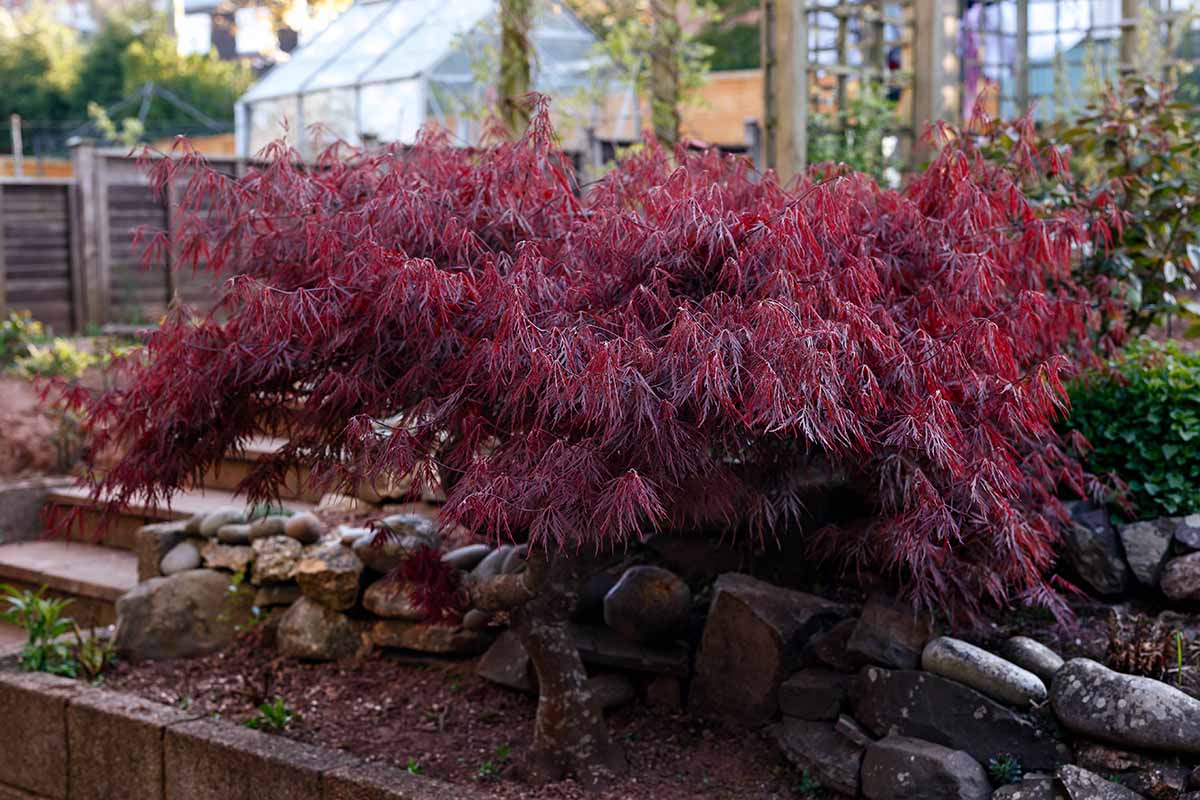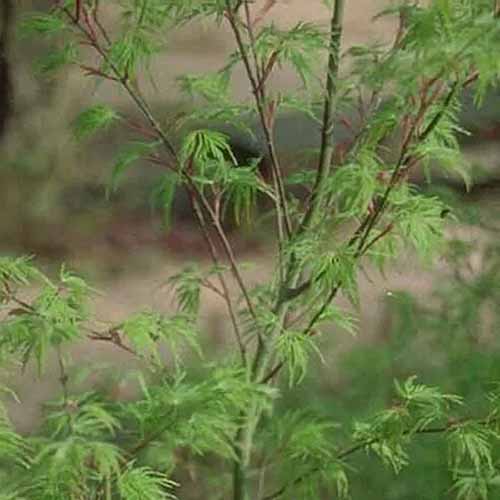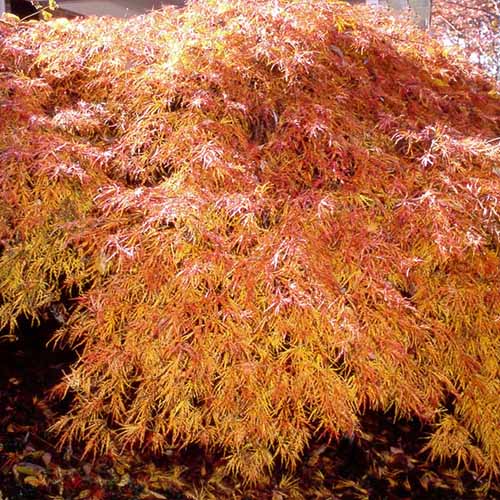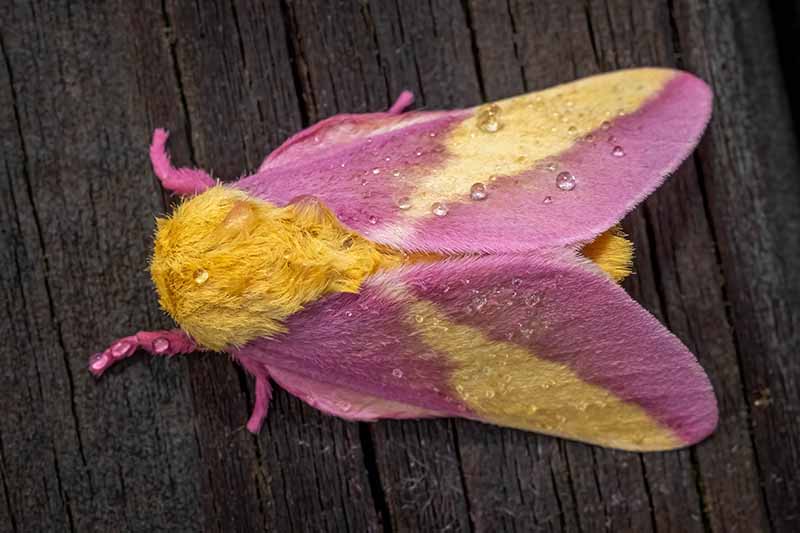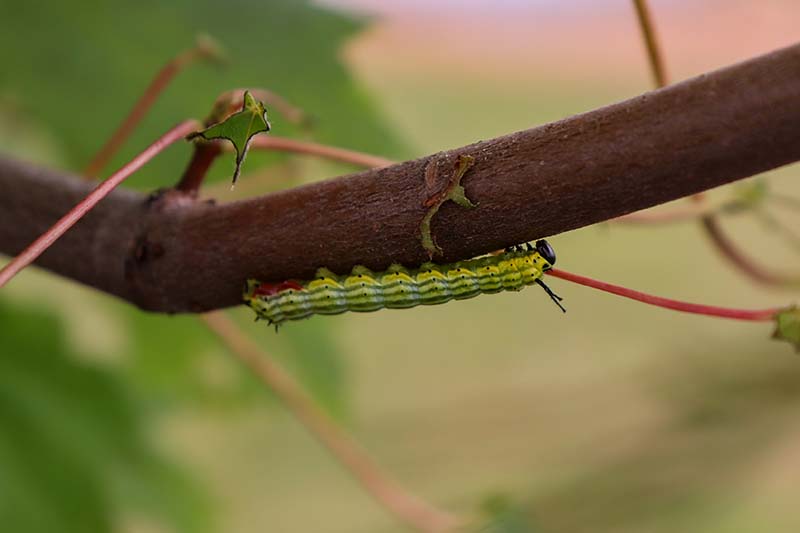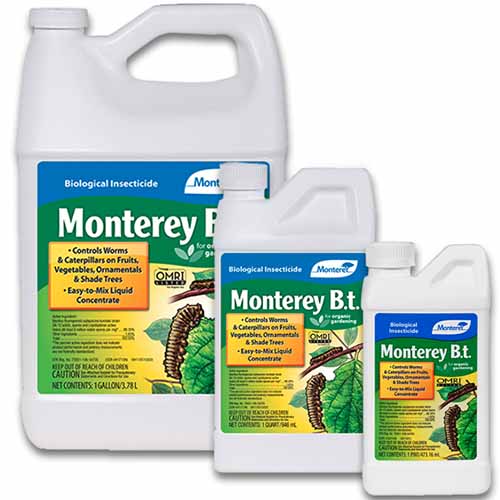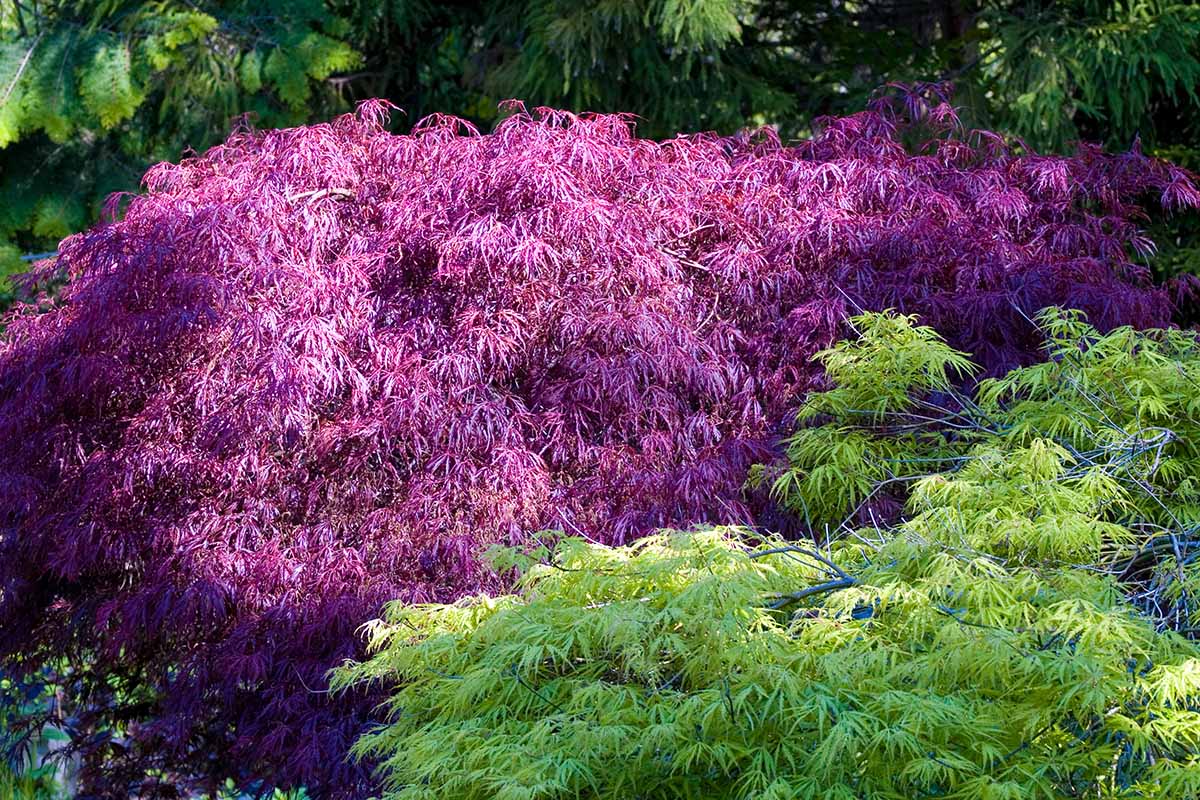This is true in the botanical world, as well. Plants with a weeping form stand out from the upright clumps of greenery that we’re so used to seeing. The uniqueness of foliage not attempting to stretch up for sunlight is intriguing, to say the least. And the beloved Japanese maple, Acer palmatum, comes in weeping form! We link to vendors to help you find relevant products. If you buy from one of our links, we may earn a commission. So much so, in fact, that we’ve whipped up this little guide here. We’ll cover everything you’ll need to know to grow these plants yourself. Here are the specific nuggets of knowledge that you’ll be nibbling on up ahead:
What Are Japanese Weeping Maples?
Although plants can secrete tear-like water droplets from the ends of their leaves – a process known as guttation – this isn’t what “weeping” is referring to in this case. When a plant’s common name contains the word “weeping,” this is in reference to the drooping growth habit of its branches and foliage. Along with this weeping form, A. palmatum var. dissectum also has dissected leaves with seven to eleven lobes each. Each lobe is jagged, feathery, and finely cut down to its point of attachment, or node. The end result is lace-like foliage that sways a bit more gracefully in the wind than standard Japanese maple foliage. For these reasons, this variety is also commonly referred to as threadleaf, cutleaf, or laceleaf Japanese maple. A. palmatum var. dissectum has an average height of eight to 10 feet so it’s a bit shorter than a standard Japanese maple, with a typical A. palmatum ranging in height from 15 to 25 feet. Both the standard species and this variety possess a spread that is typically equal to or greater than their width. I’ve generalized these details for a reason, though – with all of the natural variations and different cultivars out there, one all-encompassing description is difficult to provide if not impossible. But a weeping habit and finely-dissected leaves are common features that all maples of this variety share.
Cultivation and History
Best grown in USDA Hardiness Zones 5 to 8, A. palmatum var. dissectum hails from China, Japan, and Korea. This plant owes the “Japanese” part of its common moniker to the way it was heavily cultivated by the Japanese people for centuries. Japanese maples were first mentioned in writing way back in the 7th century, and they were introduced to England and the eastern United States in 1840 and 1862, respectively.
Propagation
Many A. palmatum var. dissectum cultivars were propagated by taking cuttings from a mutated branch of a standard Japanese maple, so it’s best to avoid growing Japanese weeping maple cultivars from seed. These cultivars, formerly unknown to Western gardeners, were brought to light by J. D. Vertrees, a retired county extension agent from Oregon who published a book titled “Japanese Maples” in 1978. This was the first text to cover A. palmatum var. dissectum cultivars in English, and it was also the first publication of Timber Press. Japanese Maples Many different cultivars have been bred since then, with each possessing a unique combination of characteristics that give this variety of Japanese maple its own ornamental niche in the landscape. Cuttings will produce a pure genetic copy of the plant that you’re propagating, while seeds may leave you with a plant that’s not quite what you were looking for. Feel free to give it a shot if you’re patient and you like unexpected surprises – you can learn more about the process in our guide to propagating Japanese maples from seed. Along with rooting cuttings, you can also transplant a Japanese weeping maple that you purchased from a nursery or an online vendor. The next day, do the same thing, but add an additional 30 to 60 minutes. Repeat this addition of time with each successive day until the cuttings are acclimated to a full day’s worth of outdoor exposure. With a sterilized blade, remove a three- to four-inch cutting from the tip of a branch. Choose one with nodes that are spaced close together, if possible. Remove the leaves from the lower half of the cutting and dip the defoliated end in rooting hormone powder or gel. Bonide Bontone II Rooting Hormone Bonide offers 1.25-ounce containers of IBA root hormone powder – enough for rooting 2,800 average cuttings – via Arbico Organics. Stick the hormone-dipped end of the cutting into a well-draining, 1020-sized plastic seed tray that’s filled with a 50/50 mix of sphagnum peat moss and perlite. Place the tray adjacent to a sunny window and keep the media moist. Hardening off can begin once the cutting has developed a set or two of new leaves. On a spring day after the threat of frost has passed, place the cutting outside in a partially-shaded spot, and leave it out for 30 to 60 minutes. Once that time’s up, bring the cutting back inside. At this point, you’re ready for transplanting!
Via Transplanting
Prepare holes in your garden that are as deep as each transplant’s root system is tall. Make the holes a bit wider than the roots, though – this makes for easier backfilling. Place the transplants into their respective holes, then backfill with the dug out soil. Water in the transplants, and keep the adjacent soil moist until they become established.
How to Grow
As with any plant, proper cultivation is essential for ideal health and aesthetics.
Climate and Exposure Needs
Japanese weeping maples grow best in USDA Hardiness Zones 5 to 8, so make sure you don’t plant north or south of these regions. A. palmatum var. dissectum loves partial shade exposures. Full sun is a bit too harsh, while full shade will diminish a Japanese weeping maple’s fall color. Think Goldilocks – not too much, not too little, but just right.
Soil Needs
Above all else, the soil must be well-draining. This can be accomplished with many different soil textures, but trying to improve the drainage to plant in clay is a hassle. Choose a space with a silt loam or sandy texture if possible. Slightly acidic soils are also your best bet, so shoot for a pH somewhere in the range of 5.5 to 6.5.
Water and Fertilizer Needs
Until established, the soil where Japanese weeping maples are planted should be kept moist. Afterwards, they only need moderate supplemental irrigation. In practice, wait until the top couple inches of soil are dry before watering in the absence of rain. Every spring, A. palmatum var. dissectum could use some fertilization before the leaves emerge. This is best achieved by working two to four inches of organic material into the soil above the root zone. Organic materials such as compost and well-rotted manure are solid choices. Read more about fertilizing Japanese maples in our guide.
Growing Tips
Partial shade exposure is optimal.Be sure to provide well-draining soil.Irrigate moderately by letting the top one to two inches of soil dry out in between watering.
Pruning
Feel free to remove diseased, dying, and sickly branches whenever you happen to notice them. Use sterilized blades when doing so. Interested in shaping your A. palmatum var. dissectum to better suit your aesthetic vision? Find more tips on pruning here.
Insects
In addition to the damage that they already cause, insects can be vectors for disease. By dialing in their management, a gardener can help to prevent disease outbreaks as well.
Crimson Queen
Known for its crimson red growth that emerges in spring and persists throughout the growing season, ‘Crimson Queen’ practically demands fealty with its gorgeous leaves. Come autumn, the foliage’s redness changes from a blood-red crimson to a bright-red scarlet. All of that in combination with beautifully cascading branches, ‘Crimson Queen’ makes for a wonderful addition to the garden. ‘Crimson Queen’ To purchase a two- to three-foot-tall ‘Crimson Queen’ in a #2 container, visit Nature Hills Nursery.
Inaba Shidare
For a red, large-leafed, and sturdy A. palmatum var. dissectum cultivar, ‘Inaba Shidare’ is the one for you. During the growing season, the six-inch-wide foliage emerges a purple-red before turning a bright crimson in fall. ‘Inaba Shidare’ also has a fast growth rate and is cold-hardy to boot, making it more than just a pretty face. Er, tree…
Seiryu
In defiance of its Japanese weeping maple kin, ‘Seiryu’ has an upright growing habit, standing tall while its brethren are fit to droop. With a rich green color during the growing season, its foliage turns shades of gold, orange, and orange-red in autumn. It’s a bit taller than average as well, with a mature height of 10 to 15 feet. Long story short – if you like the Japanese weeping maple but dislike the “weeping” part, and you also want something other than a standard Japanese maple, then ‘Seiryu’ is for you. ‘Seiryu’ Interested in this cultivar? Order one now from Nature Hills Nursery.
Viridis
With seven- to nine-lobed leaves that start off green in spring and turn yellow-gold or red in fall, ‘Viridis’ is a widely available cultivar of A. palmatum var. dissectum. With its varied color scheme at different times of year, many gardeners will be able to find a suitable space in the landscape where the hues of ‘Viridis’ will complement the plantings around it. ‘Viridis’ It reaches six to eight feet in height and six to 10 feet in width, and specimens can be purchased from FastGrowingTrees.com.
Waterfall
‘Waterfall’ is very similar to ‘Viridis,’ except for its large, three- to five-inch-long and equally wide leaves. It’s a bit more shrub-like than ‘Viridis,’ with a more rounded form. Subtle differences, sure… but ‘Waterfall’ is nevertheless an essential cultivar for any diehard Japanese weeping maple collector to own. ‘Waterfall’ To buy a two- to three-foot-tall ‘Waterfall’ specimen, check out FastGrowingTrees.com.
Managing Pests and Disease
One notable factoid: A. palmatum var. dissectum is notably resistant to rabbit damage! But this plant is far from indestructible. Let’s examine what types of pests and diseases can threaten a Japanese weeping maple’s health.
Aphids
Aphids are small, green, soft-bodied insects that feed directly from the phloem of plant tissues with sucking mouthparts. Their presence is indicated by wilting leaves and toothpick-like woody trunk protrusions. The best forms of control include strong sprays of water and applications of horticultural oil. The former will physically knock the aphids off of leaf surfaces, while the latter will snuff them out. Monterey Horticultural Oil Monterey sells horticultural oil in ready-to-spray and concentrate that are available at Arbico Organics. Read more about managing aphid infestations in our guide.
Asian Ambrosia Beetles
Also known as the granulate ambrosia beetle, Xylosandrus crassiusculus shows up in early spring to attack deciduous trees with thin bark such as Japanese weeping maples. The beetles bore into trunks, feed on sapwood and heartwood, and vector fungal pathogens. Suffering from the combined damage of all these issues, infested plants often die. Pyrethroid insecticide applications can work as a preventative measure, and permethrin formulations can be applied in February, a month before the beetles usually show up to bore into trees. If pruning dead wood doesn’t save an infested tree, it’s best to remove and destroy the entire specimen to prevent further spread.
Green-Striped Maple Worms
Dryocampa rubicunda feeds on a few different types of tree, but maples are its favorite host. The worms are the larval stage of the adult moths, aka rosy maple moths. These moths lay yellow eggs on the underside of leaves. The larvae that hatch out are about an inch and a half long when fully grown, with black heads, green and white stripes, and red markings on both ends of their bodies. After hatching, the mapleworms start feeding on foliage, which can end up severely defoliating infested trees. The damage is usually temporary, but overall growth can be stunted if defoliation occurs repeatedly in consecutive years. All this damage and stress can leave the infested tree vulnerable to more severe issues down the line.
Anthracnose
Caused by fungi, anthracnose causes darkened foliar spots, leaf cupping, leaf curling, and premature leaf drop. Scrape off the yellow egg clusters when you find them, or just remove the entire leaf. Severely infested branches can be pruned away and disposed of. Bacillus thuringiensis will target the mapleworms while leaving beneficial insects alone. Monterey Bt Liquid Concentrate Monterey sells pint-, quart-, and gallon-sized containers of Bt insecticide concentrate that are available from Arbico Organics. We’ve just hit the highlights of the most common pest issues here. You can use our in-depth pest guide to learn more about identifying and controlling other creepy crawlies that may harm your trees.
Disease
Using sterilized tools, disease-free soil, and proper cultivation practices will go a long way in keeping specimens healthy. Cool and wet weather conditions are often precursors to anthracnose infections. The fungal spores overwinter in trees and fallen leaf detritus, and are splashed by water and carried by wind in spring. Anthracnose is rarely more than a cosmetic issue, so it can be ignored and the tree will most likely be fine. But if control is warranted in the case of severe infections, there are some things you can do. Raking up and destroying leaf detritus, pruning infected branches, and proper cultivation practices are all excellent preventative measures. In the event of severe defoliation several years in a row, fungicides can be applied to prevent reinfection.
Leaf Scorch
While not a disease per se as it isn’t caused by an infectious pathogen, leaf scorch is a physiological condition that occurs when there isn’t enough water for plants to cope with harsh heat and sun. As a result of leaf scorch, foliage will brown and dry along the leaf margins. As the scorch progresses, entire leaves will blacken and die. There is no known cure for scorched foliage, but plants can bounce back if the causal stressors are remediated. This means proper watering and proper fertilizing, since the former leads to leaf scorch and the latter damages water-collecting roots.
Best Uses
A Japanese weeping maple makes for an ideal specimen planting, so be sure to put yours in a place where it will stand out as a focal point in the landscape. Most specimen plants also make good accents… but not this one. Its size, growing habit, and foliar interest make it pretty tough for an A. palmatum var. dissectum to share the spotlight. But hey – a plant could certainly have worse qualities. With how these plants weep, you wouldn’t want to put any smaller plants underneath the canopy, much like you wouldn’t want someone with an attractive forehead to sport bangs. But this weeping habit makes background plantings stand out all the more, so… pros and cons! Set your eyes on an A. palmatum var. dissectum, however, and you may find yourself welling up… or, if you dislike revealing your sensitive side, you may wonder aloud who’s cutting onions nearby. Hyperbole aside, the Japanese weeping maple is truly beautiful. It’ll make a wonderful addition to your garden or landscape! Any remarks or questions can go in the comments section below. We get a kick out of reading your comments here at Gardener’s Path, so don’t be shy! For more A. palmatum guides, behold what we have in store:
How to Grow Japanese Maple TreesA Guide to the Different Types of Japanese Maple Trees21 of the Best Japanese Maple Varieties

